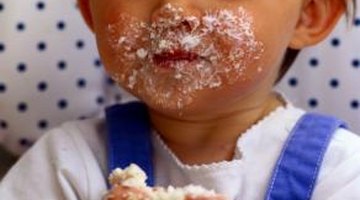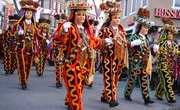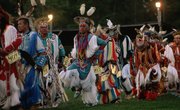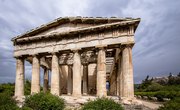Most parties are thrown to celebrate achievements or holidays, but many people also celebrate an achievement they had little to do with -- being born. And, if you were born on October 5th, you're in good company -- more people in America were born on that date than on any other, according to ABC News. Most children celebrate their birthday with a party -- a tradition that likely started in the early 1800s.
History of Birthday Parties
The birthday party we know today -- the one that involves lots of children, a theme, a cake, games and plenty of fun -- took shape gradually. The idea of a party that includes extended family and friends probably started when well-off members of Victorian society held parties to show off their wealth and teach their children about proper party etiquette, according to "A Brief History of Birthday Parties." A birthday was a good opportunity for such a party, where children could be taught proper table manners and how to dance. In addition, the parents could show off some of their wealth by presenting the birthday child with lavish gifts during the party. These Victorian birthday parties were extravagant, usually quite large -- with up to 40 children -- and organized by the mother (with the help of the servants, of course).
Origin of Birthday Party Customs
The ancient Greeks would honor the moon goddess by baking round cakes and putting candles on top of them to mimic the glow of the moon. Later, Germans modified that tradition to create two-layer birthday cakes, topped with candles, to celebrate a young child's birthday. This was called Kinderfest. The cakes were usually made of nuts or fruit. The Victorians borrowed this custom, which really took off with the invention of the first freestanding cookstove in the 1840s.
Modern Birthday Parties
Birthday parties continued to evolve and, by the late 1800s, birthday parties included party treats, entertainment and guided outings and activities. By the turn of the century, birthday parties began to be organized around age, mimicking what was happening in public school classrooms. In 1934, the "Happy Birthday" song became common at birthday parties due to its use in a popular musical. Around the same time, servants became less common due to the availability of appliances. Because mothers did not want to plan or clean up after large parties, they became smaller. Birthday parties really went mainstream in the 1950s, when they became an anticipated and expected part of childhood.
Milestone Birthdays
Not all birthday parties follow the usual pattern of cake, goody bags, games and presents. Milestone birthdays sometimes look a lot different. Some birthdays are very meaningful to religious or cultural groups because they celebrate a rite of passage, such as the Bar and Bat Mitzvah in Judaism. This is celebrated on the 13th or 12th birthday of a boy or girl, respectively, and signifies the transition from childhood to adulthood. In America, the 21st birthday is a major milestone birthday, as it signifies someone has reached the legal drinking age. Other milestone birthdays include when a girl turns 16 and the 40th birthday party, which unofficially signifies the transition into middle age and is usually marked by black decorations and gag gifts. In addition, birthdays that mark each decade are milestones as well.











